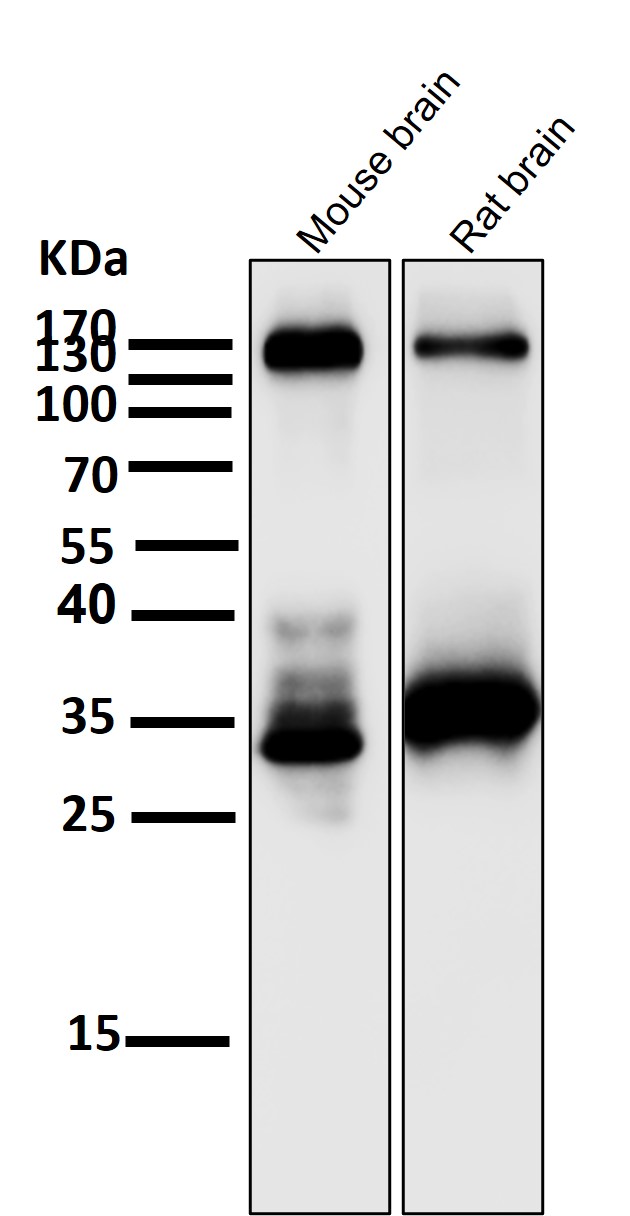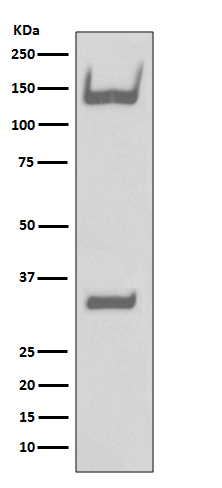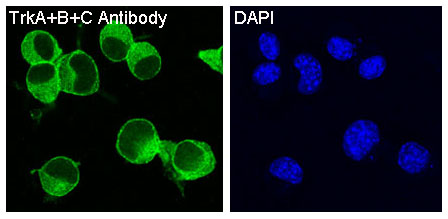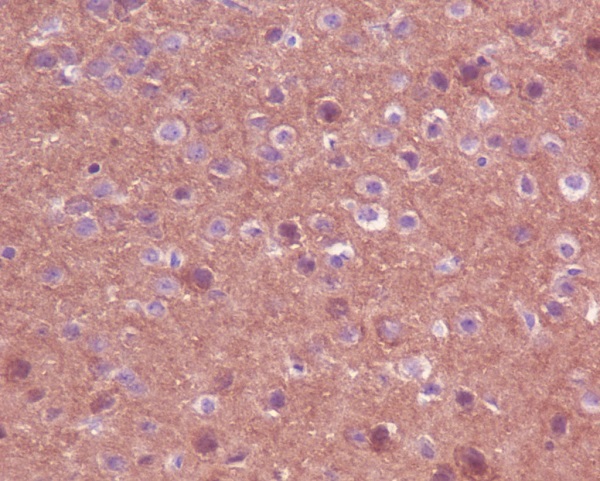



| WB | 咨询技术 | Human,Mouse,Rat |
| IF | 咨询技术 | Human,Mouse,Rat |
| IHC | IHC:1/100-1/200;IHF:1/50-1/200 | Human,Mouse,Rat |
| ICC | 1/50-1/200 | Human,Mouse,Rat |
| FCM | 咨询技术 | Human,Mouse,Rat |
| Elisa | 咨询技术 | Human,Mouse,Rat |
| Aliases | gp140trk; GP145-TrkB; GP145-TrkC; MTC; NTRK1; NTRK2; NTRK3; p140-TrkA; TRKA; TRKB; TrkB tyrosine kinase; TRKC;;Trk A/B/C |
| WB Predicted band size | Calculated MW: 87-94 kDa ; Observed MW: 140 kDa |
| Host/Isotype | Rabbit IgG |
| Antibody Type | Primary antibody |
| Storage | Store at 4°C short term. Aliquot and store at -20°C long term. Avoid freeze/thaw cycles. |
| Species Reactivity | Human,Mouse,Rat |
| Immunogen | A synthesized peptide derived from human Trk A |
| Formulation | Purified antibody in PBS with 0.05% sodium azide,0.05% BSA and 50% glycerol. |
+ +
1. **"TrkA, TrkB, and TrkC expression in human neuroblastomas"** (Nakagawara et al., 1994)
摘要:该研究通过免疫组化分析了TrkA、TrkB、TrkC在神经母细胞瘤中的表达差异,发现TrkA高表达与良好预后相关,而TrkB/C可能与侵袭性表型相关,为靶向治疗提供了依据。
2. **"Antibodies to the TrkA receptor tyrosine kinase inhibit nerve growth factor-induced differentiation"** (Clary et al., 1994)
摘要:研究报道了特异性抗TrkA抗体的开发,证实其通过阻断NGF-TrkA结合抑制神经元分化,阐明了TrkA在神经营养信号中的关键作用。
3. **"Selective activation of NF-κB by nerve growth factor through the neurotrophin receptor p75"** (Carter et al., 1996)
摘要:通过TrkA和p75特异性抗体的对比实验,揭示了NGF诱导的NF-κB激活依赖于p75而非TrkA受体,明确了Trk家族不同成员的信号通路差异。
4. **"Structural and functional studies of the extracellular domain of TrkC receptor"** (Urfer et al., 1998)
摘要:利用抗TrkC抗体解析其胞外结构域,发现其与NT-3结合的特异性位点,为开发针对TrkC的靶向药物提供了结构基础。
TrkA, TrkB, and TrkC are receptor tyrosine kinases encoded by the *NTRK1*, *NTRK2*, and *NTRK3* genes, respectively. They belong to the tropomyosin receptor kinase (Trk) family and play critical roles in neuronal development, survival, and plasticity by binding neurotrophins: TrkA primarily interacts with nerve growth factor (NGF), TrkB with brain-derived neurotrophic factor (BDNF) and neurotrophin-4 (NT-4), while TrkC binds neurotrophin-3 (NT-3). These receptors activate downstream signaling pathways, including MAPK, PI3K/AKT, and PLCγ, influencing cell differentiation, synaptic strength, and apoptosis regulation.
Antibodies targeting TrkA, TrkB, and TrkC are essential tools in neuroscience and oncology research. In cancer, *NTRK* gene fusions—resulting in constitutively active Trk fusion proteins—are oncogenic drivers in diverse tumors (e.g., sarcomas, gliomas, secretory carcinomas). Pan-Trk antibodies, which detect all three Trk isoforms, are widely used in immunohistochemistry (IHC) to screen for NTRK fusions, aiding in patient stratification for targeted therapies like larotrectinib or entrectinib. However, isoform-specific antibodies help distinguish individual Trk expression patterns, as normal neural tissues express Trk receptors at varying levels, complicating interpretation.
Trk antibodies also support mechanistic studies in neurodegenerative diseases, pain signaling, and neurodevelopmental disorders. Challenges include cross-reactivity with non-fusion Trk proteins and variability in antibody performance across tissue types. Validation using positive/negative controls and molecular confirmation (e.g., RNA sequencing) is critical for diagnostic accuracy. Overall, TrkA+B+C antibodies bridge translational research and precision oncology, enabling both biomarker discovery and therapeutic monitoring.
×